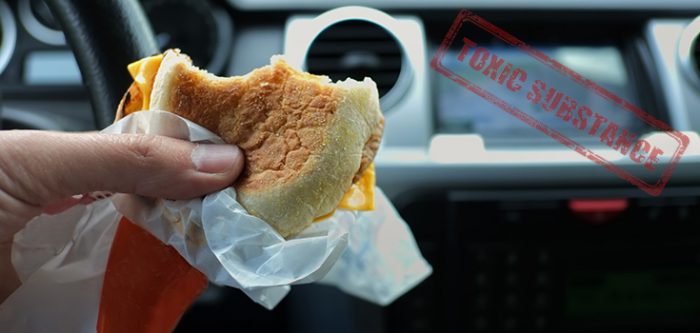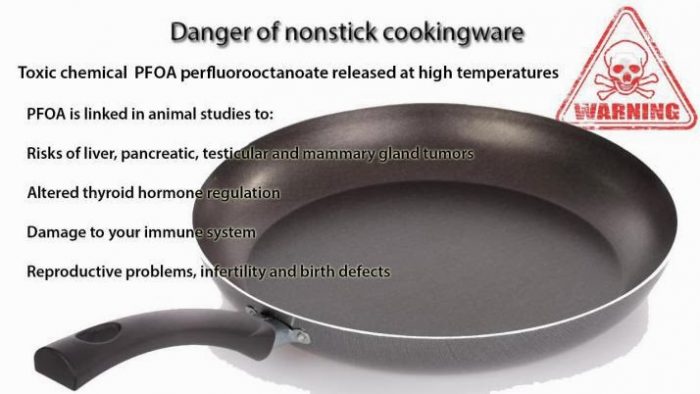Guest
Guest
 |  Subject: A Third of Fast-Food Packaging Contains Dangerous Chemicals Subject: A Third of Fast-Food Packaging Contains Dangerous Chemicals  Sun Jul 07, 2019 4:25 pm Sun Jul 07, 2019 4:25 pm | |
| https://naturalsociety.com/third-fast-food-packaging-contains-dangerous-chemicals-1919/
A Third of Fast-Food Packaging Contains Dangerous ChemicalsMore proof that fresh, homemade food is healthiest HEALTHY LIVING
BY JULIE FIDLER
POSTED ON JUNE 1, 2019
Most people are aware that fast-food has no redeeming qualities, but never give a second thought to the paper their burgers come wrapped in. But even fast-food packaging can make you sick, as pointed out by research published in Environmental Science & Technology Letters. This is yet another example of how fast-food wrappers contain dangerous chemicals – called fluorinated chemicals.[1]
Researchers tested 400 fast-food packages from various restaurants in the U.S. and found that more than a third of them contained poly- and perfluoroalkyl substances, or PFAS. These chemicals are everywhere – in non-stick pans, pizza boxes, cell phones, and even in backpacks. In fast-food wrappers, they are used as a coating to repel moisture. [2]Two PFAS – perfluorooctanoic acid (PFOA) and perfluorooctanesulfonic acid (PFOS) – have been shown to cause:
- Testicular and kidney cancer
- Liver malfunction
- Hormonal changes
- Thyroid disruption
- High cholesterol
- Obesity
- Ulcerative colitis
- Lower birth weight and size
 Source: Run Healthy LifestyleXenia Trier, a chemist at the European Environment Agency who was not involved with the study, says: Source: Run Healthy LifestyleXenia Trier, a chemist at the European Environment Agency who was not involved with the study, says: - Quote :
- “These chemicals are very convenient. You can use something like paper. If it’s untreated it will soak fat, it will soak water. As such it’s not very efficient as a food container. If you impregnate these food containers with these [chemicals] they get this magic—they work for everything.” [1]
She adds that, “unfortunately we do know they are quite toxic and have been associated with many diseases.”Past studies have shown that PFASs on food packaging can seep into your food, said Laurel Schaider, a research scientist at the Silent Spring Institute and one of the authors of the paper.She said: - Quote :
- “These studies have found that the extent of migration depends on the temperature of the food, the type of food and how long the food is in contact with the paper. And it depends on which specific chemical” is in the packaging. [2]
In 2011, after the FDA reviewed packaging materials, several manufacturers voluntarily agreed to stop using PFASs in their food packaging products. The presence of elements of fluorine may not be manufacturers’ fault, the researchers say. Rather, it may have entered the system from the use of recycled materials. [3]Recently, the FDA has been urged once again to launch a study into the consequences of using chemicals like phthalates in food packaging. This is more proof that our food packaging is tainted with toxins.Would You Like Toxins With That?For the study, which involved researchers from 5 different institutions, more than 400 samples of fast-food packaging was collected from 27 leading U.S. food chains, and divided into 6 categories:
- Food contact paper (sandwich wrappers and pastry bags)
- Food contact paperboard (pizza and French fry boxes)
- Non-contact paper (outer bags)
- Paper cups
- Other beverage containers (milk and juice containers)
- Miscellaneous (lids) [2]
Food contact papers were divided into 3 categories:
- Sandwiches
- Burgers
- Fried foods
Of the food contact papers tested, 46% tested positive for fluorine, a marker of PFASs. Food contact paperboard came in 2nd, at 20%, followed by other beverage containers at 16%. All of the other categories tested negative for fluorine.Tex-Mex food packaging and dessert and bread wrappers were the worst offenders, and were more likely to contain fluorine than other categories of food packaging. [3] Avoiding PFASsHopefully you don’t eat fast-food often, but even if you’re a once-in-a-while diet cheater, there are a few steps you can take to protect yourself from PFASs:
- Take food out of its packaging immediately.
- Ask that your fries of dessert be served in a paper cup or noncontact paper bag – that outer bag that all your items are usually put into when you get your food. [2]
There are plenty of fluorine-free products that manufacturers can use, so if the idea of eating something that was wrapped in chemicals used to main raincoats bothers you, pressure your fast-food chains to cut out PFASs.Schaider says: - Quote :
- “I think that this study provides yet another reason to support the idea that eating more fresh food and more home-cooked meals is better for our health, but it’s hard to avoid the convenience of fast food, especially in people’s busy lives.”
Sources:[1] Popular Science[2] CNN[3] Consumer AffairsRun Healthy Lifestyle

| POST WRITTEN BYJulie Fidler:
Julie Fidler has written hundreds of articles on key world topics such as health, drugs, and law. She is also the author of Adventures in Holy Matrimony: For Better or the Absolute Worst. Oh, and she loves to take care of two ridiculously- spoiled cats in her free time. |
|
|





